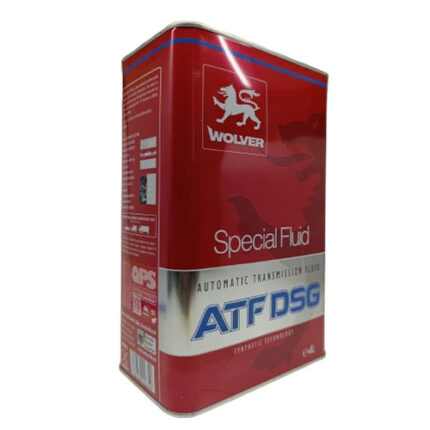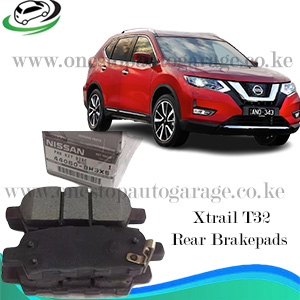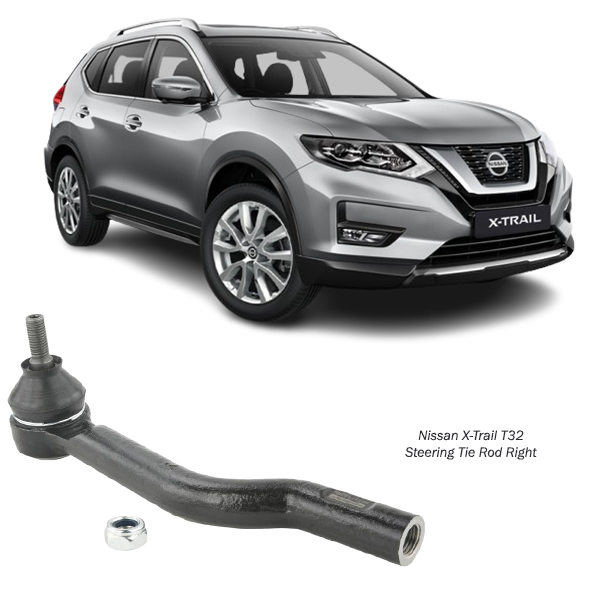-17%
Get Nissan X-Trail T32 Right Steering Tie Rod End 0221-T32RH in Kenya
The steering tie rod end is a critical component of a vehicle’s steering system, ensuring precise handling and safety. Its primary role is to connect the steering rack to the steering knuckle, enabling the wheels to turn as the driver rotates the steering wheel. This article delves into the functions, construction, benefits, maintenance tips, and troubleshooting of a right steering tie rod end.
1. Functions of the Right Steering Tie Rod End
The right steering tie rod end plays an essential role in steering mechanics and vehicle alignment. Its functions include:
a) Transmitting Steering Input to the Wheels
When the steering wheel is turned, the tie rod end transfers motion from the steering rack to the steering knuckle. This movement ensures that the wheels pivot accordingly.
b) Maintaining Wheel Alignment
Tie rod ends contribute to maintaining proper wheel alignment angles, such as toe-in and toe-out. Misalignment can lead to uneven tire wear and reduced steering control.
c) Absorbing Road Impact
The tie rod end absorbs minor road vibrations and impacts, protecting other steering system components from excessive stress.
d) Enabling Suspension Movement
As part of the steering linkage, the tie rod end flexes and pivots to accommodate suspension travel during driving, ensuring smooth motion and control.
2. Construction and Design
Tie rod ends are precision-engineered to endure dynamic forces and ensure reliable performance. Here’s an overview of their construction:
a) Ball and Socket Joint
At the core of the tie rod end is a ball-and-socket joint, which allows for rotational and pivoting movement. This design is crucial for seamless steering operation and suspension articulation.
b) Housing and Stud
The ball joint is enclosed in a durable metal or polymer housing. The stud, which protrudes from the joint, connects to the steering knuckle and features threading for secure fastening.
c) Grease Fittings
Many tie rod ends come with grease fittings, enabling regular lubrication to minimize friction and extend service life.
d) Boot Cover
A rubber or polyurethane boot seals the joint, protecting it from contaminants like dirt, water, and debris, which could accelerate wear.
3. Benefits of a Well-Maintained Right Steering Tie Rod End
A properly functioning right steering tie rod end offers several advantages, contributing to overall vehicle performance and safety:
a) Enhanced Steering Precision
A robust tie rod end ensures accurate response to steering inputs, improving vehicle control.
b) Improved Tire Longevity
Maintaining proper alignment prevents uneven tire wear, maximizing tire lifespan and reducing replacement costs.
c) Safe Handling
Efficient steering components provide stability during cornering and emergency maneuvers, reducing the risk of accidents.
d) Reduced Vibrations
A well-maintained tie rod end minimizes road vibrations and noise, enhancing comfort for the driver and passengers.
e) Cost-Effective Maintenance
Regular inspection and timely replacement of tie rod ends prevent damage to other steering and suspension components, saving money in the long run.
4. Common Signs of Tie Rod End Wear or Failure
Tie rod ends are subject to significant wear due to constant movement and exposure to harsh conditions. Signs of a failing right steering tie rod end include:
a) Steering Wheel Play
Excessive play or looseness in the steering wheel can indicate worn tie rod ends.
b) Uneven Tire Wear
Misalignment caused by a faulty tie rod end often results in uneven tread wear patterns.
c) Clunking Noises
A loose or damaged tie rod end may produce clunking sounds, especially when turning or driving over bumps.
d) Steering Vibrations
A failing tie rod end can cause vibrations in the steering wheel, particularly at higher speeds.
e) Drifting or Pulling
If the vehicle drifts or pulls to one side while driving, it may be due to a compromised tie rod end.
5. Maintenance and Inspection Tips
Regular maintenance and inspection of the tie rod end are essential for ensuring optimal performance and longevity. Here are some tips:
a) Regular Visual Inspections
Check the tie rod end for visible signs of wear, such as a torn boot or corrosion.
b) Lubrication
Grease the tie rod end if it has a grease fitting, as proper lubrication reduces friction and wear.
c) Alignment Checks
Have the vehicle’s wheel alignment checked periodically to prevent excessive strain on the tie rod ends.
d) Replace When Necessary
If a tie rod end shows signs of wear or damage, replace it promptly to avoid compromising steering performance and safety.
e) Torque Specifications
Ensure that the tie rod end is torqued to the manufacturer’s specifications during installation to prevent loosening or overtightening.
6. Replacement and Installation Process
Replacing a right steering tie rod end is a straightforward procedure but requires precision and adherence to safety guidelines:
a) Tools Required
- Jack and jack stands
- Wrenches
- Torque wrench
- Tie rod end puller
- Grease gun (if applicable)
b) Steps to Replace
- Lift the Vehicle: Use a jack and secure the vehicle on jack stands for safety.
- Remove the Old Tie Rod End: Loosen the lock nut and disconnect the tie rod end from the steering knuckle using a tie rod puller.
- Mark the Position: Note the thread position on the tie rod to maintain alignment during installation.
- Install the New Tie Rod End: Thread the new tie rod end into place, matching the previous position, and tighten the lock nut.
- Reconnect to Steering Knuckle: Secure the tie rod end stud to the steering knuckle and torque to specification.
- Perform Alignment: After replacement, have the vehicle’s wheel alignment checked and adjusted if necessary.
7. Materials and Durability
Modern tie rod ends are made from high-strength materials, including:
- Steel Alloys: For robust performance and resistance to stress.
- Polyurethane: For boot covers, offering flexibility and durability.
- Anti-Corrosion Coatings: To prevent rust and prolong the component’s lifespan.
8. Troubleshooting Common Issues
Some challenges may arise during the maintenance or replacement of tie rod ends:
a) Stuck or Rusted Tie Rods
Apply penetrating oil and use a tie rod end puller to loosen stubborn parts.
b) Difficulty in Alignment
Seek professional assistance for precise alignment to avoid uneven handling or tire wear.
c) Boot Damage
If the boot is torn, replace it promptly to prevent contaminants from damaging the joint.
9. Choosing the Right Tie Rod End
When selecting a replacement tie rod end, consider the following:
- Compatibility: Ensure it matches your vehicle’s make, model, and steering system.
- Quality: Opt for reputable brands to guarantee reliability and longevity.
- Warranty: Look for products with a warranty for added assurance.
10. Conclusion
The right steering tie rod end is an indispensable part of a vehicle’s steering and suspension system. Its role in ensuring smooth and responsive handling cannot be overstated. By understanding its functions, recognizing signs of wear, and performing regular maintenance, you can maximize the tie rod end’s lifespan and ensure safe driving conditions. Always prioritize quality and professional installation to uphold vehicle performance and safety.
Follow us on Facebook for more parts.



